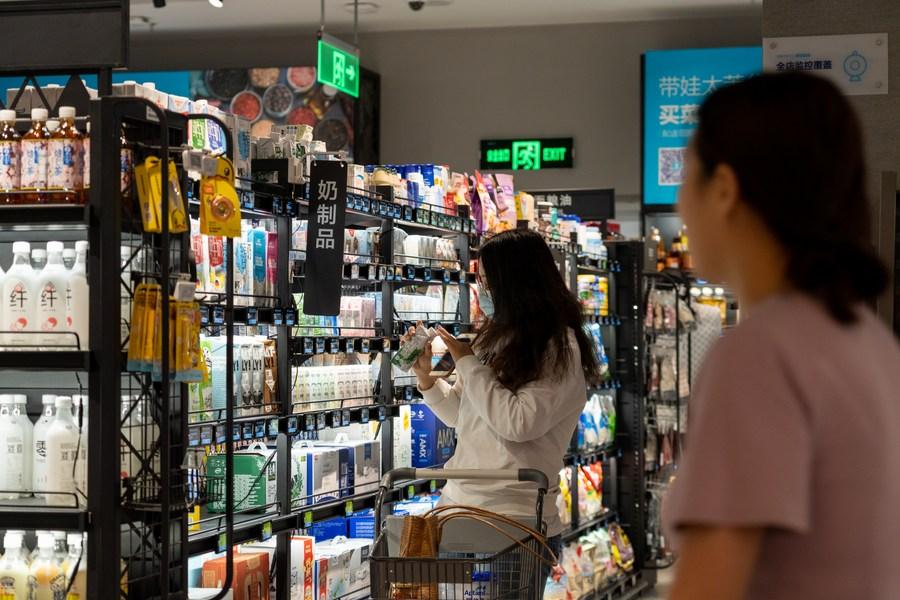
People shop at a supermarket in Nanjing, east China's Jiangsu Province, May 11, 2021. (Photo by Du Yi/Xinhua)
BEIJING, July 13 (Xinhua) -- A series of leading indicators and high-frequency data released recently demonstrates a steady economic recovery in the first half (H1) of the year in China, and many institutions have expressed optimism about China's economic trend, reported Economic Information Daily Tuesday.
In the first quarter (Q1) of 2021, with the continuous recovery of the national economy and the low base effect, China's gross domestic product (GDP) increased by 18.3 percent year on year.
The GDP growth in Q1 was weaker than the previous quarter affected by the stay-put policy during the Spring Festival holiday, but in the second quarter (Q2), the indicator may significantly rebound from Q1 driven by exports and base factors, pointed out Wang Han, chief economist of Industrial Securities Co., Ltd. (601377.SH) based in Fuzhou, capital city of east China's Fujian province.
The supply and demand sides have been keeping improving in Q2. Since April, the industrial production has maintained a relatively high boom, with the industry value added increasing by 8.8 percent year on year in May and power generation and steelmaking data remaining high.
The Purchasing Managers' Index (PMI) recorded 50.9 percent in June, a slight decrease of 0.1 percentage point month on month yet with resilience.
In addition, with the accelerated restoration of the service industry and the recovery of residents' income, consumption is expected to continue the slow restoration trend in Q2 with the recovery of manufacturing investment quickened, and the real estate investment remaining resilient.
Many institutions are optimistic about the positive trend of macro indicators.
According to a report by the China Center for National Accounting and Economic Growth of Peking University, China's GDP growth in Q2 maybe lower than that in Q1 due to a higher year-on-year base, but as the impact of the COVID-19 pandemic gradually weakens and the endogenous growth momentum of the economy increases, the economic growth in Q2 may remain at a relatively high level.
"Even stripping out the base effect, the economic growth is expected to remain strong in Q2," said Li Chao, chief economist of Zheshang Securities Co., Ltd. (601878.SH) based in Hangzhou of east China's Zhejiang Province.
The offline consumption has rebounded driven by the holidays in the late period of the pandemic while retail is still in recovery, noted Li, adding that the two-year average growth of the investment in the manufacturing sector in May has turned from negative to positive, and the investment is expected to maintain a stable growth in June under the conditions of stable demand, strong profits and strong financial support.
The real estate investment is relatively resilient, and the overall fixed asset investment is running smoothly, Li stated.
The Bank of China Research Institute believes that benefiting from the overall economic recovery and the further expansion of vaccination, the policies introduced since H1 to boost consumption and stabilize prices will continue to take effects, and the consumption will continue to recover in the second half of the year.
International institutions are also raising expectations for China's economic growth. The World Bank has raised China's economic growth forecast this year from 8.1 percent to 8.5 percent in its latest report on China's prospects.
(Edited by Wang Yuhang, Gu Shanshan with Xinhua Silk Road, gushanshan.1987@163.com)




 A single purchase
A single purchase









